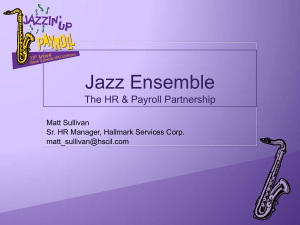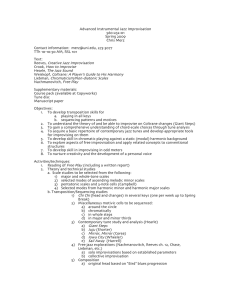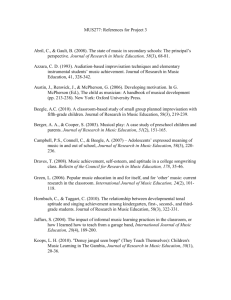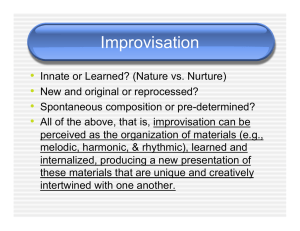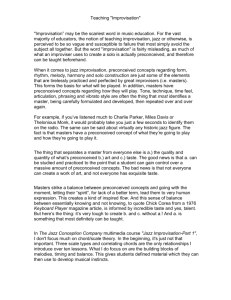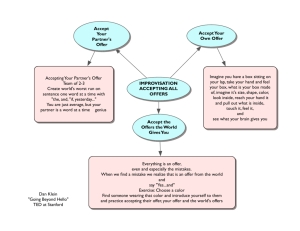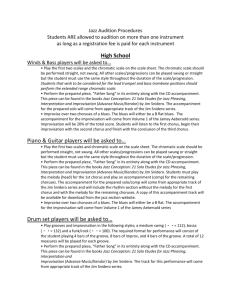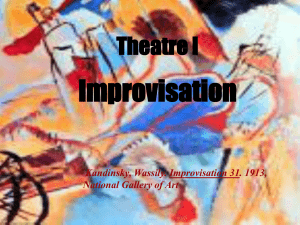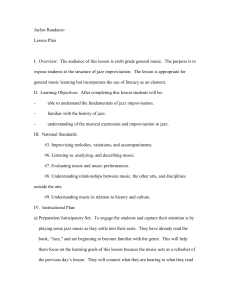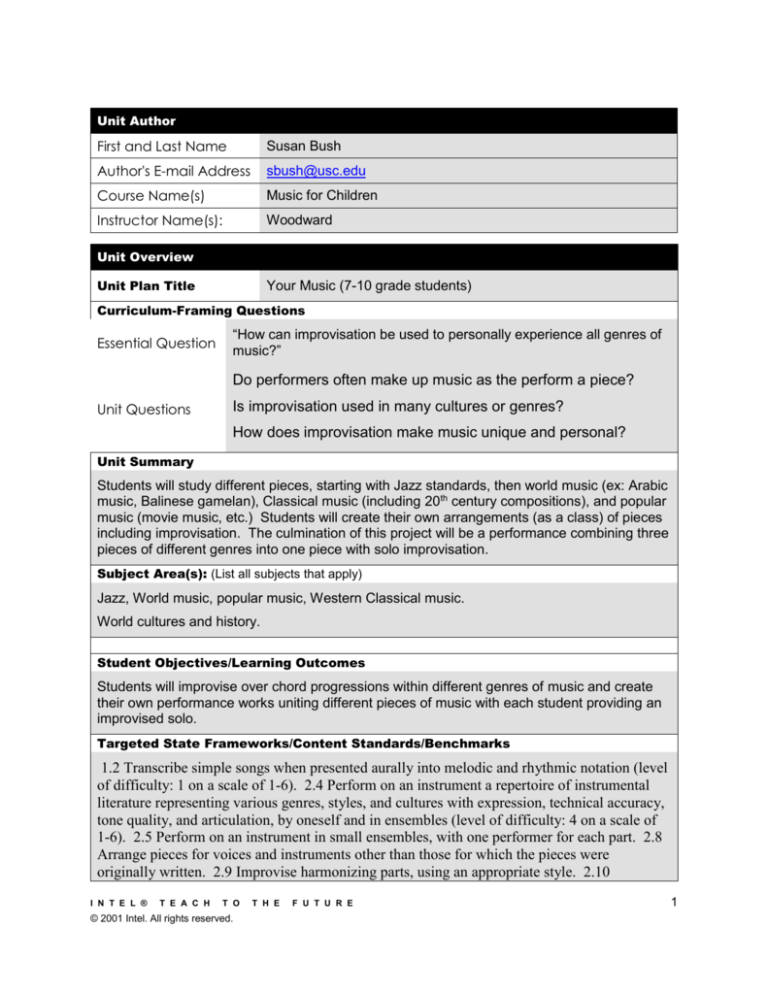
Unit Author
First and Last Name
Susan Bush
Author's E-mail Address
sbush@usc.edu
Course Name(s)
Music for Children
Instructor Name(s):
Woodward
Unit Overview
Unit Plan Title
Your Music (7-10 grade students)
Curriculum-Framing Questions
Essential Question
“How can improvisation be used to personally experience all genres of
music?”
Do performers often make up music as the perform a piece?
Unit Questions
Is improvisation used in many cultures or genres?
How does improvisation make music unique and personal?
Unit Summary
Students will study different pieces, starting with Jazz standards, then world music (ex: Arabic
music, Balinese gamelan), Classical music (including 20th century compositions), and popular
music (movie music, etc.) Students will create their own arrangements (as a class) of pieces
including improvisation. The culmination of this project will be a performance combining three
pieces of different genres into one piece with solo improvisation.
Subject Area(s): (List all subjects that apply)
Jazz, World music, popular music, Western Classical music.
World cultures and history.
Student Objectives/Learning Outcomes
Students will improvise over chord progressions within different genres of music and create
their own performance works uniting different pieces of music with each student providing an
improvised solo.
Targeted State Frameworks/Content Standards/Benchmarks
1.2 Transcribe simple songs when presented aurally into melodic and rhythmic notation (level
of difficulty: 1 on a scale of 1-6). 2.4 Perform on an instrument a repertoire of instrumental
literature representing various genres, styles, and cultures with expression, technical accuracy,
tone quality, and articulation, by oneself and in ensembles (level of difficulty: 4 on a scale of
1-6). 2.5 Perform on an instrument in small ensembles, with one performer for each part. 2.8
Arrange pieces for voices and instruments other than those for which the pieces were
originally written. 2.9 Improvise harmonizing parts, using an appropriate style. 2.10
I N T E L ®
T E A C H
T O
© 2001 Intel. All rights reserved.
T H E
F U T U R E
1
Improvise original melodies over given chord progressions. 3.1 Identify the sources of
musical genres of the United States, trace the evolution of those genres, and cite well-known
musicians associated with them. 3.4 Perform music from various cultures and time periods.
Procedures
Learn each piece, research it’s background, add improvisation, arrange, perform, record,
assess.
1. First students will be introduced to jazz music and improvisation as it is used most
commonly. Students will learn a jazz standard and will then be asked to improvise in
groups and individually using the jazz pentatonic scale over chord progressions.
Students will arrange their piece for performance.
2. Students will learn Indonesian gamelan music, or Arabic pop, or any other culture
which they are interested in. They will learn to perform the pieces, then add their own
improvisation. This time they will not be required to use the jazz pentatonic, but will be
encouraged to find their own improvised melodies. Again, arranged and performed.
3. This process will be approached with classical pieces (like the pachebel canon) and
with popular music that students bring in.
4. Students will put together a medley of a variety of the pieces they have learned and
will each improvise a melody over the chord progressions in performance.
5. Students will complete, during this unit, a research project on one of the genres of
music studied and it’s history, culture, and social importance.
Approximate Time Needed (Example: 45 minutes, 4 hours, 1 year, etc.)
45 minutes, 3 times per week, 1 semester
Prerequisite Skills
Intermediate performance skills on an instrument.
I N T E L ®
T E A C H
T O
© 2001 Intel. All rights reserved.
T H E
F U T U R E
2
Materials and Resources Required For Unit
Printed Materials
Sheet music (ex: watermelon man, mask of zorro, pachabel canon)
Supplies
Recordings of world music and players improvising (jazz), recordings
of popular music.
Internet Resources
Background information on pieces studied. Computer with internet,
video camera, VCR, DVD player, Television.
Accommodations for Differentiated Instruction
Resource
Student
Will benefit from group work. If students are uncomfortable doing solo improv,
they can do it in groups and help hold the chords and rhythm together.
Gifted
Student
Opportunities for leadership in arrangement and solo improvisation.
Student Assessment:
Participation, Improvement on instrument and in improvisation. Playing skills can be
evaluated in solo work. Research projects provide assessment of understand the history and
socio-cultural context of music. Students will also complete theory lessons in transcribing and
arranging form of music. This can be evaluated with standard testing methods.
I N T E L ®
T E A C H
T O
© 2001 Intel. All rights reserved.
T H E
F U T U R E
3
I N T E L ®
T E A C H
T O
© 2001 Intel. All rights reserved.
T H E
F U T U R E
4

